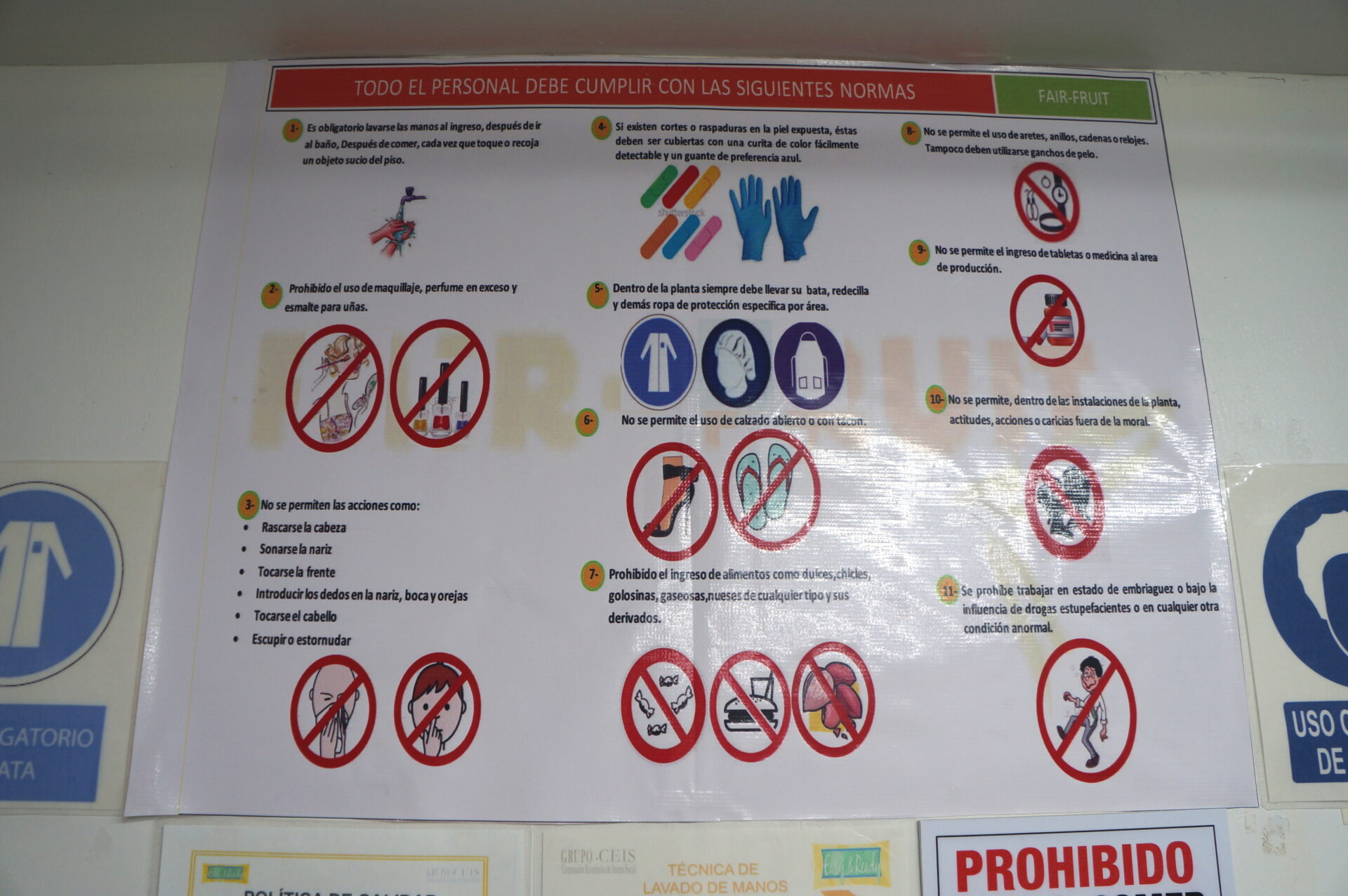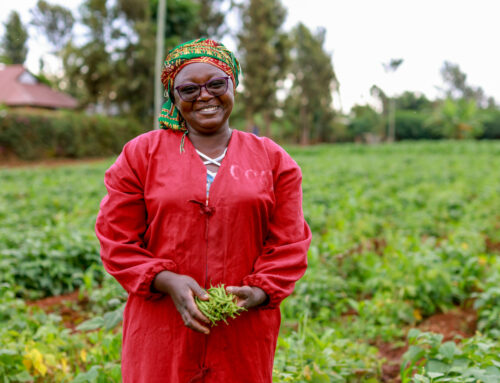Regina Cosenza – Certification Specialist
Regina Cosenza is an Agronomist from the Earth University of Costa Rica, specialising in international trade management. She is accredited by the UTZ sustainability program and OCIA International and has completed training for HACCP with Primus Labs certifier and in Global GAP with the Organic Inspectors Association (IOIA). Regina currently works as a freelance organic inspector the USDA’s National Organic Program, as well as with those in the EU, Canada, Japan and Mexico.
She sat down with us to share the ins and outs of certification, and how to prepare agribusinesses for export markets.
What are agricultural certification programs and why do they exist?
The international food safety certification programs are designed to identify contamination hazards at each step in the production chain, from harvesting to shipping. They were established because food-borne diseases from biological or chemical contamination are increasing, with implications for consumer health.
So the purpose of these certifications is to prevent contamination so that product arrives as clean and safe as possible to consumers.
Why is having certification important?
It’s important for producers to have a certification as a way to assure consumers that the product they are eating is clean and safe. Now certifications also includes standards for quality and sustainable production, assuring production happens without harmful chemicals, which is the case with organic certifications.
What are the main certification programs that agricultural smallholders producers and processors need to complete?
The main certifications for agricultural production are Good Agricultural Practices (GAP), Global GAP (oriented for Europe and the US) and sustainability programs such as organic production certifications. These are the most common quality assurance programs that producers and processors of fresh fruits and vegetables should complete.
For processing activities, the main one is Good Hygienic Practices and Hazard Analysis and Critical Control Point system (HACCP). HACCP is focused on food safety through process control protocols that prevent product contamination with bacteria and fungi, but also on controlling the presence of residuals, such as stones and even metals through production to packing and shipping. As HACCP offers a global revision of the process from beginning to end, it covers requirements by the Good Manufacturing Practices (GMP) certification.
Each certification program has its own requirements, so it’s important to consult with a certifier before starting a certification process. Ask for the list of requirement and norms and be sure to understand them before starting the process.
What certifications are required for export purposes?
The most common required by export markets include programs such as Good Agricultural Practices (GAP), Good Manufacturing Practices (GMP), Good Hygienic Practices and Hazard Analysis and Critical Control Point system (HACCP) and Global GAP.
Secondary certifications related to sustainability are starting to be requested more often. These include Fair Trade and others related to agrochemical traceability, which is often demanded by European markets.
For certifications specifically related to food management (GMP, HACCP) what are the basic requirements and protocols for a processor?
-
PVC curtains must separate external from internal areas
-
Workers need their own space for changing with lockers available for storing their clothes, as they cannot enter into the plant with the clothes they arrived in. They also need to wash their hands before entering
-
A separate bathroom with hand washing facilities are needed and hand washing needs to be enforced. In some plants, technology that reveals microorganisms can be used to test workers’ hands
-
Tables need to be in inox (stainless) steel to allow easy cleaning
-
The plant can’t have corners or 90º angles. It needs to have sanitary curves to allow easy cleaning and prevent the accumulation of dust and the growth of bacteria and fungi
-
Lamps need to have a cover protection in case something happens to the lamp, and to prevent residuals falling over the processing space
-
Having a protocol that clearly establishes that the first produce to come in must be the first to come out
-
Creating a flow chart that establishes the production path to avoid mixing produce, to reduce opportunities for cross-contamination and ensure correct temperatures are maintained
-
Registration protocols should detail the process from beginning to the end
Describe the process for certification.
Firstly the producer or processor needs to read and study requirements before contracting a certifier, to avoid losing their money in the event they are not granted certification. Once they feel prepared, they can engage with the certifier, and start compiling paperwork including a description of the production process, so the certifier can understand how the production and processing operation works. Then the certifier organizes the inspection, goes in with a check-list and advises what is okay and what needs to be improved. The certifier takes two months more or less for giving a notice, as it depends on the report prepared by the inspector.
What are the main challenges of food management certification programs?
In production certifications, the installation of toilets near crops can pose a challenge. Producers are reluctant to make this investment as they believe it’s not necessary. But this is a basic requirement for a GAP certification and for food safety certification. Also, producers tend to not to be consistent with enforcing protocols and procedures required for the certification, such as cleaning tools in a solution after use. So it’s always recommended to have a supervisor that assures producers enforce requirements and make them a habit.
In processing, challenges arise around establishing workers habits, such as hand washing, removing jewelry, nail polish and make-up.
What are the main incentives for certification?
Having certification opens doors for commercializing. If a company in the US sees that a Guatemalan company has a HACCP certification, the buyer will see will see their product as safe for their end consumers.
At the outset, the investment can be perceived as high, but at having the certification means the operation will be more efficient and able to reduce costs.
In some cases, some certifications command higher prices and even premiums, such a Fair Trade certification.
What disincentives exist?
Compiling registers demotivates producers because it’s perceived as tedious. Also producers and processors tend to be wary and distrust inspectors. They think that the whole process can be long, difficult and expensive, with a lot of changes and the risk of being rejected. The certification tends to be seen as an expense, not an investment.
In the case of HACPP, processors sometimes delay certification as is common to use places not built for food management. So changes can be many, such as the separation of spaces and having curved walls for easy cleaning.
How do InspiraFarms facilities stand up to certification requirements?
They provide an easy and fast solution for a HACCP certified plant. Crucially, they have an adequate distribution of spaces for classification, hygiene areas, processing areas and loading areas, which ensures the product will follow the right path for avoiding contamination.
What recommendations can you give producers and processors who want to certify?
To see the certification as an investment and not as an expense as it opens doors and opportunities for trade. Also if they wish to have any certification, first is to study all requirements and be sure what they have and what they need to improve and change.
If you would like further information on certification or a consultation, Regina can be reached at rcosenzaz@gmail.com



